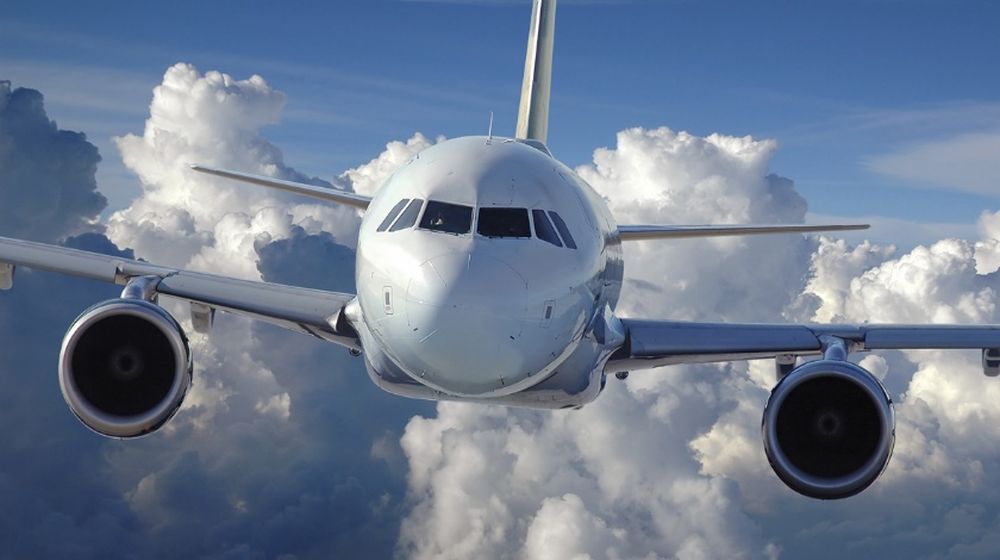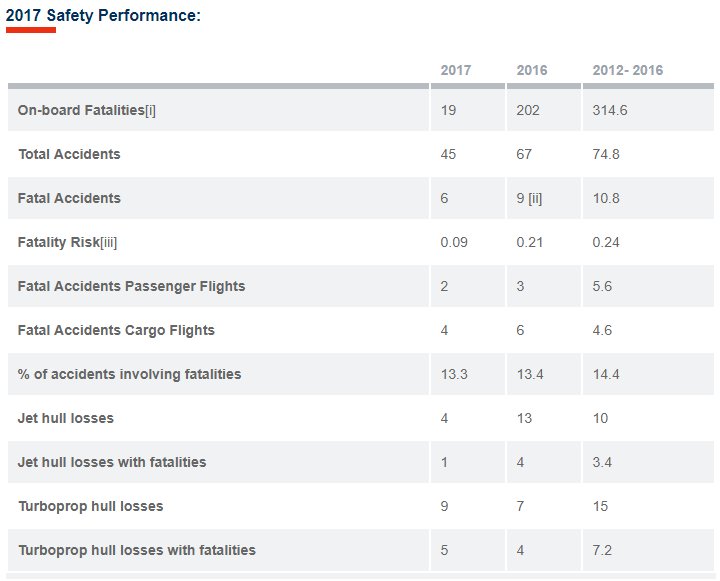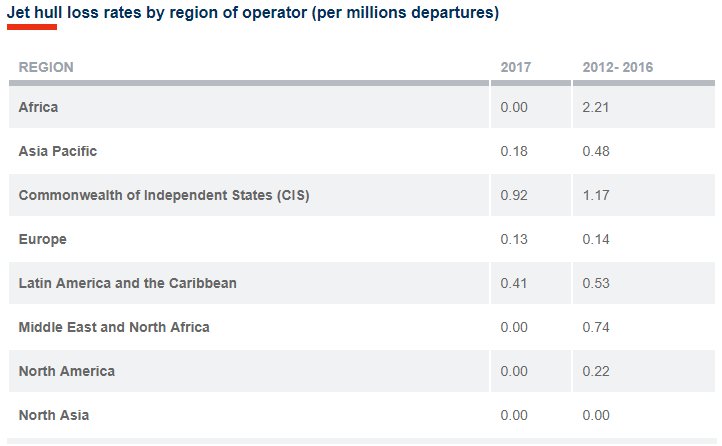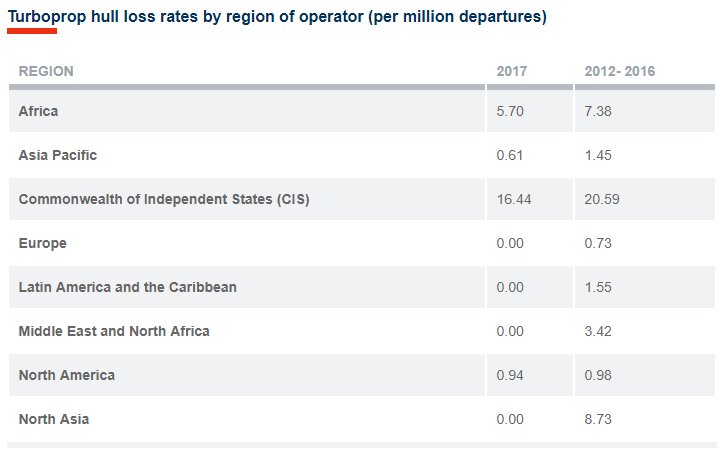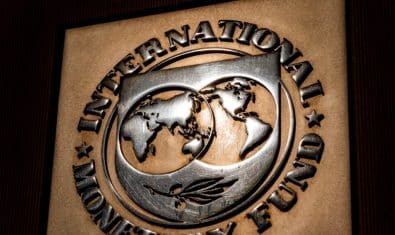The International Air Transport Association (IATA) released data for the 2017 safety performance of the commercial airline industry showing continued strong improvements in safety.
- The all accident rate (measured in accidents per 1 million flights) was 1.08, an improvement over the all accident rate of 1.68 in 2016 and the rate of 2.01 for the previous 5-year period (2012-2016).
- The 2017 rate for major jet accidents (measured in jet hull losses per 1 million flights) was 0.11, which was the equivalent of one major accident for every 8.7 million flights. This was an improvement over the rate of 0.39 achieved in 2016 and also better than the five-year rate (2012-2016) of 0.33.
- There were 6 fatal accidents with 19 fatalities among passengers and crew. This compares with an average of 10.8 fatal accidents and approximately 315 fatalities per year in the previous five-year period (2012-2016). In 2016 there were 9 fatal accidents and 202 fatalities.
- None of the 6 fatal accidents involved a passenger jet. Five involved turboprop aircraft and one involved a cargo jet. The crash of the cargo jet also resulted in the deaths of 35 persons on the ground, as well as the crew of the jet.
- IATA member airlines experienced zero fatal accidents or hull losses in 2017 with jet or turboprop equipment.
ALSO READ
Official: New Islamabad Airport to be Operational From April 16th
Alexandre de Juniac, IATA’s Director General and CEO said,
2017 was a very good year for aviation safety. Some 4.1 billion travelers flew safely on 41.8 million flights. We saw improvements in nearly all key metrics—globally and in most regions. And our determination to make this very safe industry even safer continues. In 2017 there were incidents and accidents that we will learn from through the investigation process, just as we will learn from the recent tragedies in Russia and Iran. Complementing that knowledge are insights we can gain from the millions of flights that operate safety. Data from these operations is powering the development of predictive analytics that will eventually enable us to eliminate the conditions that can lead to accidents. The industry knows that every fatality is a tragedy. Our common goal is for every flight to take-off and land safely.
Almost all regions showed improvement in 2017 compared to the previous five years (2012-2016) as follows:
The world turboprop hull loss rate was 1.30 per million flights, which was a deterioration from 1.01 in 2016 but an improvement over the five-year rate (2012-2016) of 2.18. All regions saw their turboprop safety performance improve in 2017 when compared to their respective five-year rates. Notwithstanding this, accidents involving turboprop aircraft represented 44% of all accidents in 2017 and 83% of fatal accidents.
In 2017, the all accident rate for airlines on the IATA Operational Safety Audit (IOSA) registry was nearly four times better than that of non-IOSA airlines (0.56 vs. 2.17) and it was nearly three times better over the 2012-16 period. All IATA member airlines are required to maintain their IOSA registration. There are currently 423 airlines on the IOSA Registry of which 142 are non-IATA Members. Over the next few years, IOSA will undergo a digital transformation that will enable IOSA airlines to compare and benchmark their performance. In the long run, the digital transformation will help to focus auditing on areas with the highest level of safety risk.
Six-Point Safety Strategy
IATA’s Six Point Safety Strategy is a comprehensive data-driven approach to identify organizational, operational and emerging safety issues:
- Reducing operational risk such as LOC-I (Loss of Control In-flight), CFIT (Controlled Flight Into Terrain) and RE (Runway Excursions)
- Enhancing quality and compliance through audit programs
- Advocating for improved aviation infrastructure such as implementation of performance-based navigation approaches
- Supporting consistent implementation of Safety Management Systems
- Supporting effective recruitment and training to enhance quality and compliance through programs such as the IATA Training and Qualification Initiative
- Identifying and addressing emerging safety issues, such as lithium batteries and integrating remotely-piloted aircraft systems (RPAS) into airspace.
provider: youtube
url: https://www.youtube.com/watch?v=haHAjzLQcOc
src in org: https://www.youtube-nocookie.com/embed/haHAjzLQcOc?feature=oembed&modestbranding=0&showinfo=0&rel=0&autoplay=1
src in mod: https://www.youtube-nocookie.com/embed/haHAjzLQcOc?modestbranding=0&showinfo=0&rel=0&autoplay=1
src gen org: https://www.youtube-nocookie.com/embed/haHAjzLQcOc
